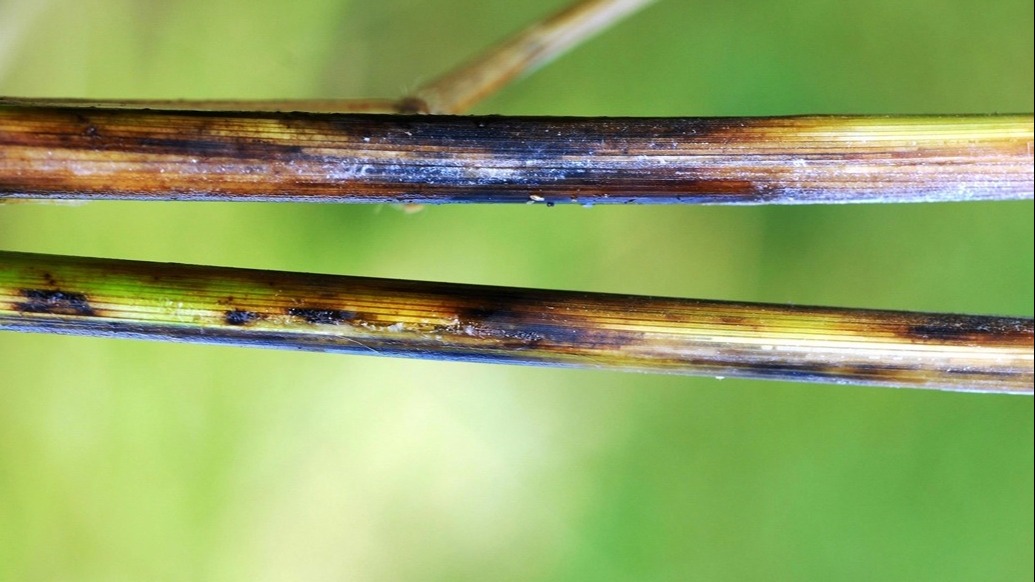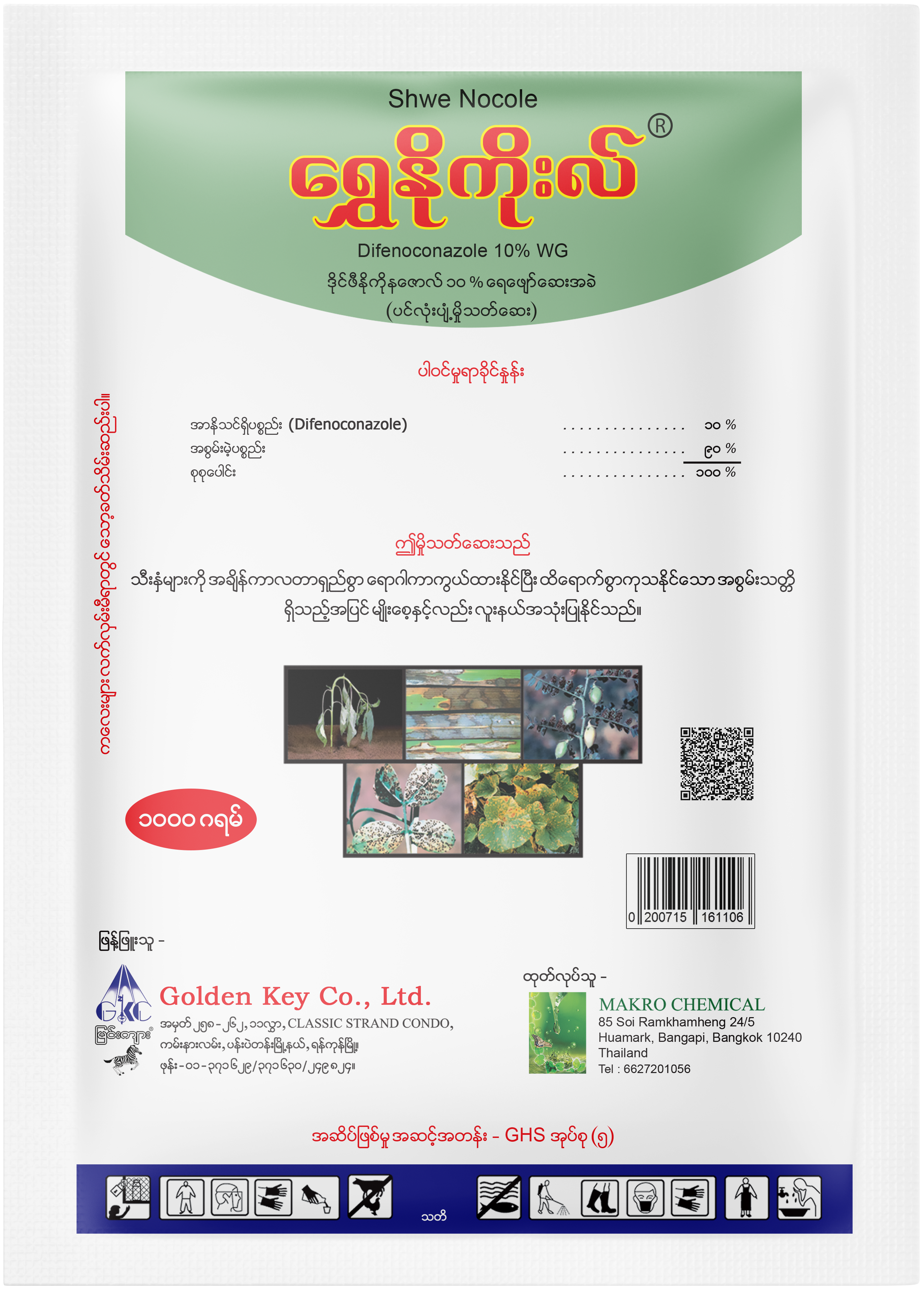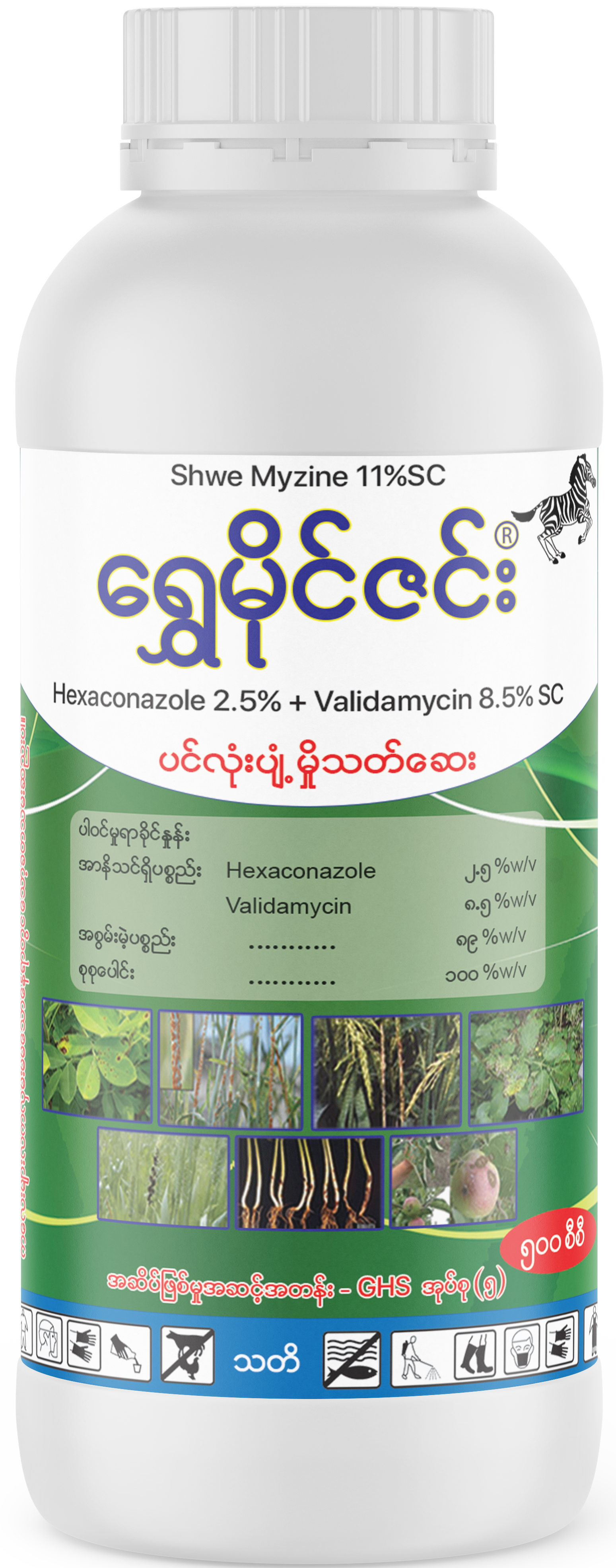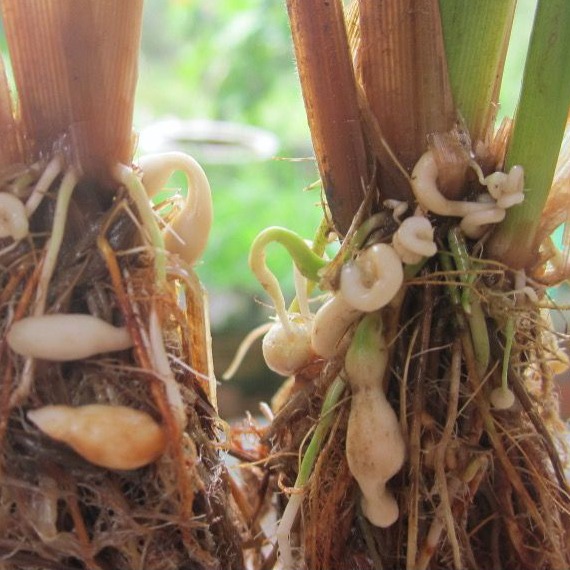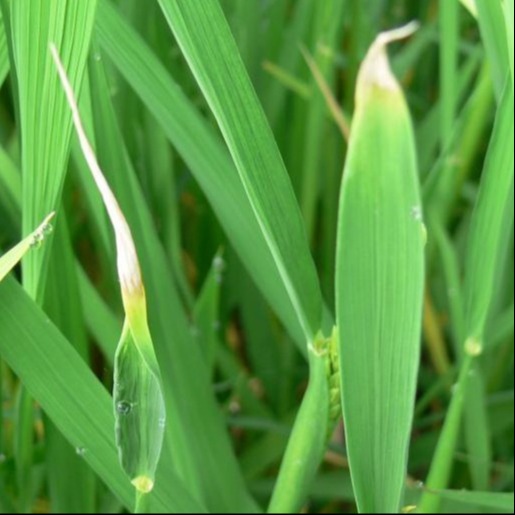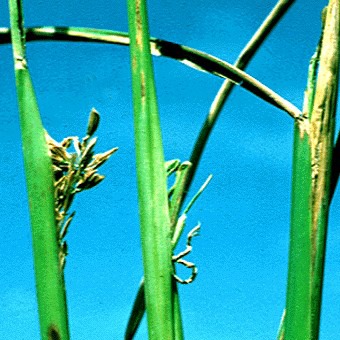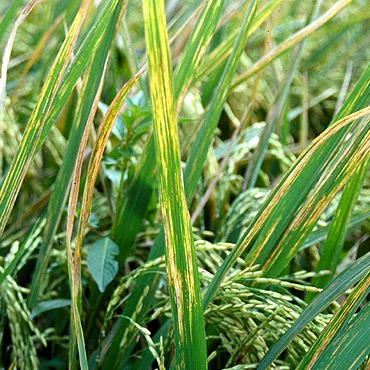Stem Rot
Symptom
The disease usually begins to appear in the field during the later stages of growth of the rice plant. Initial symptoms are small, irregular black lesions on the outer leaf sheath near water level. The lesions start as oblong or somewhat irregular spots, with brown margins and grey centres, or they may be greyish-brown throughout. They enlarge and often coalesce and may cover most of the leaf sheath. The young panicles remain within the sheath, do not develop further and rot, or only partial panicle emergence may be observed. Most grains are sterile, shriveled, partially or unfilled, and discolored. Hard black balls of fungal threads ('sclerotia') germinate on the leaf sheaths, infect, causing large black spots, which penetrate to the stem; rots on the stem cause lodging and, in severe cases, death of the tillers. Numerous sclerotia form on and inside the leaf sheaths and stem. Too much nitrogen fertizer and too little potassium affects disease development.


